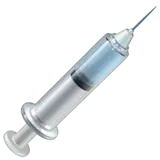Sphaeropsis blight
Diplodia blight, Diplodia tip blight


CLASSIFICATION
Fungi, Ascomycetes, Sphaeropsis, Sphaeropsis sapinea
ABOUT
Sphaeropsis blight (Diplodia tip blight) is caused by the fungal pathogen Sphaeropsis sapinea (also known as Diplodia pinea) and the symptoms include browning and stunting of the needles, branch dieback, cankers, and root disease.
How to treat?
 Biological
BiologicalIf possible remove and destroy the infected and dead parts of the plant. During dry weather (ideally in autumn), prune infected twigs and remove cones. Burn it, toss it into the garbage, or bury it deeply. Do not compost
Apply ecological products for plant protection (e.g. copper-based spray).
 Chemical
ChemicalIf necessary, apply a fungicide. Fungicides are usually applied at the turn of April and May (Northern Hemisphere).
If necessary, apply fungicide containing thiophanate-methyl (GHS07: Harmful, GHS08: Health hazard, GHS09: Environmental hazard).
If necessary, apply fungicide containing chlorothalonil (GHS05: Corrosive, GHS06: Toxic, GHS07: Harmful, GHS08: Health hazard, GHS09: Environmental hazard).
 Disease prevention
Disease preventionUse resistant species and cultivars as well as healthy, certified seeds and seedlings. Avoid planting sensitive crops in infested soil.
Improve the air circulation around the plant (e.g. by pruning excess foliage or increasing the spacing between plants).
Avoid mechanical damage to plants. Control insects and other pests to avoid injuries, which could be a point of access for the fungus.
Disinfect tools, infected flower pots, and hands to avoid disease transmission.